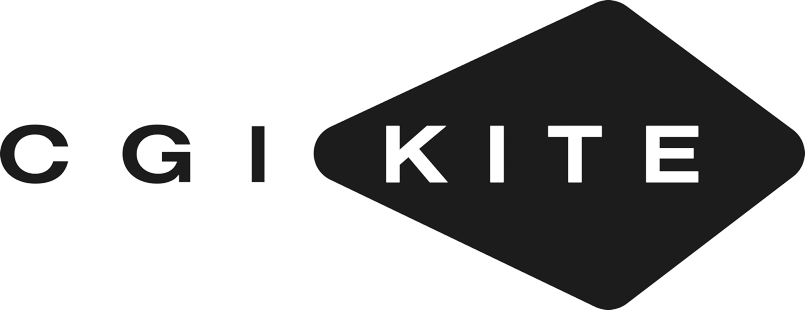MAy 30, 2023
The Power and Potential of Photorealistic Rendering in Architectural Visualization

The article explores the significance of photorealistic rendering in architectural visualization. It highlights the benefits of this advanced technology and provides real-world case studies to demonstrate its impact on the design process. The article emphasizes the power of architectural visualization in conveying design concepts, specifically focusing on interior rendering, exterior rendering, and architecture animation. It discusses the rise of photorealistic rendering as a game-changer, explaining how it brings a new level of realism to visualizations by simulating lighting, materials, and textures. The advantages of photorealistic rendering are explored, including realistic representation of materials, enhanced understanding of scale and spatial relationships, and its role as a marketing tool. The article also highlights the importance of photorealistic rendering in facilitating client and stakeholder visualization, allowing them to envision the final design and provide valuable feedback. Real-world case studies showcase the transformative nature of photorealistic rendering. The article concludes by discussing the future of architectural visualization, including the integration of virtual reality and augmented reality technologies. It encourages architects and designers to embrace photorealistic rendering for improved communication and visualization, as it enhances client engagement and brings designs to life in a remarkable way.
Introduction
Architectural visualization plays a pivotal role in the design process, allowing architects and designers to effectively communicate their ideas and concepts to clients and stakeholders. In recent years, the use of photorealistic rendering has gained increasing significance in this context, revolutionizing the way architectural projects are visualized. This article explores the power and potential of photorealistic rendering in architectural visualization, highlighting its benefits and discussing real-world case studies. By embracing this advanced technology, architects and designers can create immersive experiences, improve client engagement, and enhance the overall design process.
The Power of Architectural Visualization
An architectural visualization is a powerful tool that goes beyond mere sketches and blueprints, allowing architects to vividly communicate their design concepts. Within the realm of architectural visualization, three key aspects play a significant role: interior rendering, exterior rendering, and architecture animation. These elements harness the power of visualization to bridge the gap between ideas and reality, enabling clients and stakeholders to fully comprehend and engage with architectural projects.
Architectural visualization, through 3D apartment interior rendering, exterior rendering, and architecture animation, empowers architects to effectively communicate their visions. By employing these tools, architects bridge the gap between ideas and reality, enabling clients and stakeholders to envision the spatial qualities, materials, and overall aesthetic of a design. This level of immersion and understanding facilitates collaborative decision-making, feedback, and refinement of the project. Ultimately, architectural visualization elevates the design process, ensuring that the final result aligns with the client's vision while creating captivating and functional spaces that leave a lasting impact.
Architectural visualization, through 3D apartment interior rendering, exterior rendering, and architecture animation, empowers architects to effectively communicate their visions. By employing these tools, architects bridge the gap between ideas and reality, enabling clients and stakeholders to envision the spatial qualities, materials, and overall aesthetic of a design. This level of immersion and understanding facilitates collaborative decision-making, feedback, and refinement of the project. Ultimately, architectural visualization elevates the design process, ensuring that the final result aligns with the client's vision while creating captivating and functional spaces that leave a lasting impact.
The Rise of Photorealistic Rendering:
In recent years, photorealistic rendering has emerged as a game-changer in the field of architectural visualization. This advanced technique has revolutionized the way architects and designers showcase their projects, pushing the boundaries of realism and immersing clients and stakeholders in lifelike visual experiences. By simulating lighting, materials, and textures with meticulous detail, photorealistic rendering elevates visualizations to a whole new level, creating images that closely resemble photographs of the final design.
Photorealistic rendering goes beyond traditional rendering methods by striving for an unparalleled level of realism. Through sophisticated algorithms and software, architects and designers can replicate the behavior of light in virtual environments, accurately capturing how it interacts with various surfaces, materials, and objects. This attention to detail brings a heightened sense of authenticity to the visualizations, allowing clients and stakeholders to envision the project in its intended form.
As technology continues to advance, the capabilities of photorealistic rendering will only grow. Real-time rendering, virtual reality (VR), and augmented reality (AR) are becoming increasingly integrated into the architectural visualization process, further enhancing the immersive experience. Architects and designers can now offer virtual tours, allowing clients and stakeholders to explore spaces and interact with the design in a realistic and engaging manner.
Photorealistic rendering goes beyond traditional rendering methods by striving for an unparalleled level of realism. Through sophisticated algorithms and software, architects and designers can replicate the behavior of light in virtual environments, accurately capturing how it interacts with various surfaces, materials, and objects. This attention to detail brings a heightened sense of authenticity to the visualizations, allowing clients and stakeholders to envision the project in its intended form.
As technology continues to advance, the capabilities of photorealistic rendering will only grow. Real-time rendering, virtual reality (VR), and augmented reality (AR) are becoming increasingly integrated into the architectural visualization process, further enhancing the immersive experience. Architects and designers can now offer virtual tours, allowing clients and stakeholders to explore spaces and interact with the design in a realistic and engaging manner.

Benefits of Photorealistic Rendering
The advantages of photorealistic rendering in architectural design are numerous. Firstly, it allows for a realistic replication of materials and textures, whether it's the roughness of exposed brick, the sheen of polished marble, or the warmth of natural wood, photorealistic rendering accurately recreates these visual and tactile qualities. This level of fidelity in materials enhances the overall realism of the visualization, enabling clients and stakeholders to fully appreciate and understand the design concept.
By merging lighting, materials, and textures, photorealistic rendering creates visualizations that leave a lasting impact on clients and stakeholders. The images generated through this technique evoke an emotional response, making the design concept more tangible and relatable. The level of detail and realism achieved with photorealistic rendering engenders trust and confidence in the project, allowing clients to better visualize the end result and make informed decisions.
Moreover, photorealistic rendering serves as a valuable marketing tool. In an industry where visual appeal plays a significant role, the ability to showcase designs with stunning realism and attention to detail gives architects and designers a competitive edge. Photorealistic visualizations enable effective communication with potential investors, buyers, and the wider public, as they can envision themselves in the space and understand its aesthetic and functional qualities.
Furthermore, photorealistic rendering aids in evaluating scale, proportion, and spatial relationships, ensuring that the design meets the desired specifications. It facilitates the exploration of interior and exterior spaces, allowing clients and stakeholders to experience the project before it is constructed.
Photorealistic rendering plays a crucial role in supporting client and stakeholder engagement throughout the design process. Providing a realistic depiction of the final design, it allows clients to envision the space and make more informed decisions. They can provide feedback based on their visualization experience, leading to a collaborative design process and greater client satisfaction.
By merging lighting, materials, and textures, photorealistic rendering creates visualizations that leave a lasting impact on clients and stakeholders. The images generated through this technique evoke an emotional response, making the design concept more tangible and relatable. The level of detail and realism achieved with photorealistic rendering engenders trust and confidence in the project, allowing clients to better visualize the end result and make informed decisions.
Moreover, photorealistic rendering serves as a valuable marketing tool. In an industry where visual appeal plays a significant role, the ability to showcase designs with stunning realism and attention to detail gives architects and designers a competitive edge. Photorealistic visualizations enable effective communication with potential investors, buyers, and the wider public, as they can envision themselves in the space and understand its aesthetic and functional qualities.
Furthermore, photorealistic rendering aids in evaluating scale, proportion, and spatial relationships, ensuring that the design meets the desired specifications. It facilitates the exploration of interior and exterior spaces, allowing clients and stakeholders to experience the project before it is constructed.
Photorealistic rendering plays a crucial role in supporting client and stakeholder engagement throughout the design process. Providing a realistic depiction of the final design, it allows clients to envision the space and make more informed decisions. They can provide feedback based on their visualization experience, leading to a collaborative design process and greater client satisfaction.
Case Studies
Real-world examples further demonstrate the impact of photorealistic rendering in architectural visualization. These case studies highlight instances where rendering aided in client communication, design approval, or project success. By presenting before-and-after visuals, the transformative nature of photorealistic rendering becomes evident, showing how it can turn abstract concepts into tangible representations that resonate with clients and stakeholders.
Conclusion
Photorealistic rendering has emerged as an indispensable tool in architectural visualization, revolutionizing the way designs are communicated and experienced. Its ability to create stunningly realistic visuals, accurately depicting materials, lighting, and textures, has elevated the design process to new heights. By embracing this advanced technology, architects and designers can bridge the gap between imagination and reality, fostering greater client and stakeholder engagement.
The benefits of photorealistic rendering are vast, as it enables clients to envision the final design before construction begins, leading to informed decision-making and enhanced collaboration. The realistic representation of scale, proportion, and spatial relationships facilitates a deeper understanding of the project's potential, ensuring that the design meets the desired objectives. Moreover, a photorealistic rendering serves as a powerful marketing tool, captivating potential investors and buyers by showcasing the project's aesthetics and functionality.
Looking to the future, the integration of virtual reality (VR) and augmented reality (AR) holds great promise for architectural visualization. These technologies will further enhance the immersive experience, allowing stakeholders to interact with and explore designs in unprecedented ways. The line between the virtual and physical realms will continue to blur, opening up exciting possibilities for architects and designers to create transformative experiences for their clients.
In a world where effective communication and visualization are paramount, embracing photorealistic rendering is no longer an option but a necessity. By leveraging its power and potential, architects and designers can elevate their projects, enhance client satisfaction, and foster meaningful engagement with stakeholders. As CGI Kite continues to push the boundaries of architectural design, photorealistic rendering will undoubtedly remain at the forefront, enabling us to turn visions into awe-inspiring realities.
The benefits of photorealistic rendering are vast, as it enables clients to envision the final design before construction begins, leading to informed decision-making and enhanced collaboration. The realistic representation of scale, proportion, and spatial relationships facilitates a deeper understanding of the project's potential, ensuring that the design meets the desired objectives. Moreover, a photorealistic rendering serves as a powerful marketing tool, captivating potential investors and buyers by showcasing the project's aesthetics and functionality.
Looking to the future, the integration of virtual reality (VR) and augmented reality (AR) holds great promise for architectural visualization. These technologies will further enhance the immersive experience, allowing stakeholders to interact with and explore designs in unprecedented ways. The line between the virtual and physical realms will continue to blur, opening up exciting possibilities for architects and designers to create transformative experiences for their clients.
In a world where effective communication and visualization are paramount, embracing photorealistic rendering is no longer an option but a necessity. By leveraging its power and potential, architects and designers can elevate their projects, enhance client satisfaction, and foster meaningful engagement with stakeholders. As CGI Kite continues to push the boundaries of architectural design, photorealistic rendering will undoubtedly remain at the forefront, enabling us to turn visions into awe-inspiring realities.

Did you like this article?
Follow us
Read more articles



